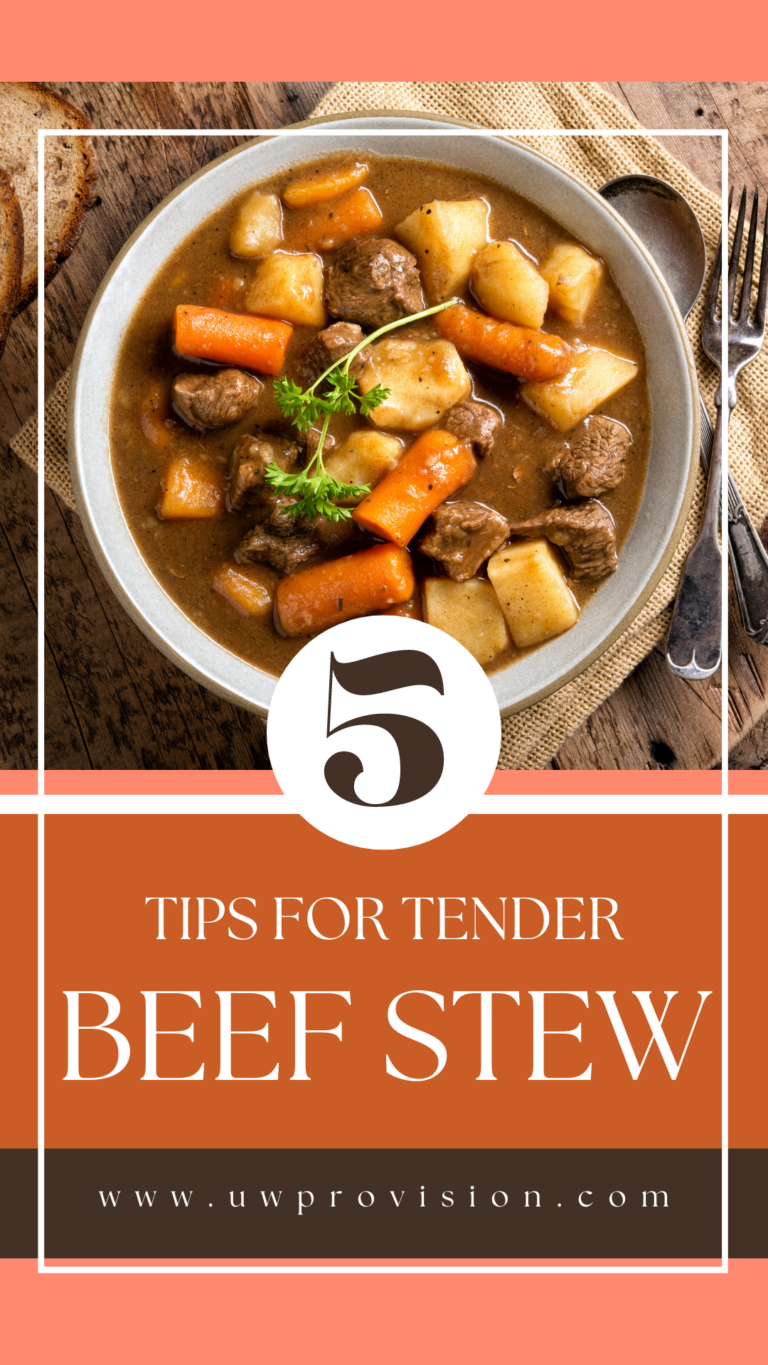
5 Tips to Making thew Tenderest Beef Stew
09.13.2022• Tips & Tricks
Did you know you can’t use beef stew as a password… it’s not stroganoff. All jokes aside, one thing we can all agree not to joke about is good ole pot of beef stew. As the weather cools down, soup season is heating up and we’re here to show you how to become a soup-er star 👩🍳
1. Find the Right Cut.
Stews come under the umbrella of slow cooked beef dishes and as such any beef cut that shines in slow cooking will work well. This is the time to use a cheaper cut as while they are tougher, they turn into melt-in-your-mouth pieces of beef once cooked over a longer period of time.
It is easy to fall into the trap that tender is always better, but when cooked over an extended period of time, the fat in tender cuts will melt away too quickly, turning the meat firm and chewy.
The most common beef used for stew is chuck steak, also known as gravy beef or braising steak.
Beef chuck comes from the forequarter of the animal consisting of parts of the neck, shoulder blade and upper arm. It is easy to find and it’s affordable, making it a great choice for your stew. Chuck has high levels of connective tissue and as such will become moist as it releases high levels of gelatin. In addition to the connective tissue, it has a good amount of marbling and low external fat.
2. Make it hot and dirty
When cooking your stew it’s important to brown and caramelize the meat first. This will create added depth and flavor to the whole stew. You’ll want to brown the beef and then make the stew in the same pan, without cleaning it.😉
This does two things: it caramelizes the meat, giving it a beautiful color and deepening the flavor. Browning the meat also develops the fond—dark caramelized bits of meat and juices—on the bottom of the pan, providing another layer of flavor to the stew.
3. Break it Up
When browning the beef, sear in batches and don’t overcrowd the pan. This technique will give each piece enough space to perfectly caramelize and you won’t accidentally steam the meat.
If you crowd the meat it won’t caramelize; instead it will just steam in all of the juices released from too much meat. So take it easy and don’t get irritated that much of the bottom of the pan has free space where you’d like to place more meat. Keep the heat medium high but beware not to burn the bottom of the pan. Move the pan on and off the burner to regulate the heat.
4. Slow it down
Once you’ve added all of your ingredients, you’ll want to simmer the stew at a low heat for two to three hours. Give it a taste-test at the two-hour mark and if the meat isn’t tender enough just extend the cooking time until the meat is falling apart. If you’re bulking up the dish with vegetables, we recommend saving them to add towards the end of the cook so they don’t get overly soft.
5. Clean it Up
To make a healthier stew you can skim the fat off the top before serving, or if you’ve made a batch in advance wait until the stew cools in the fridge, which will cause the fat on the top to harden, making it much easier to get off.
Tips brought to you by our knowledgeable friends at https://steakschool.com/learn/what-beef-to-use-for-stew/
